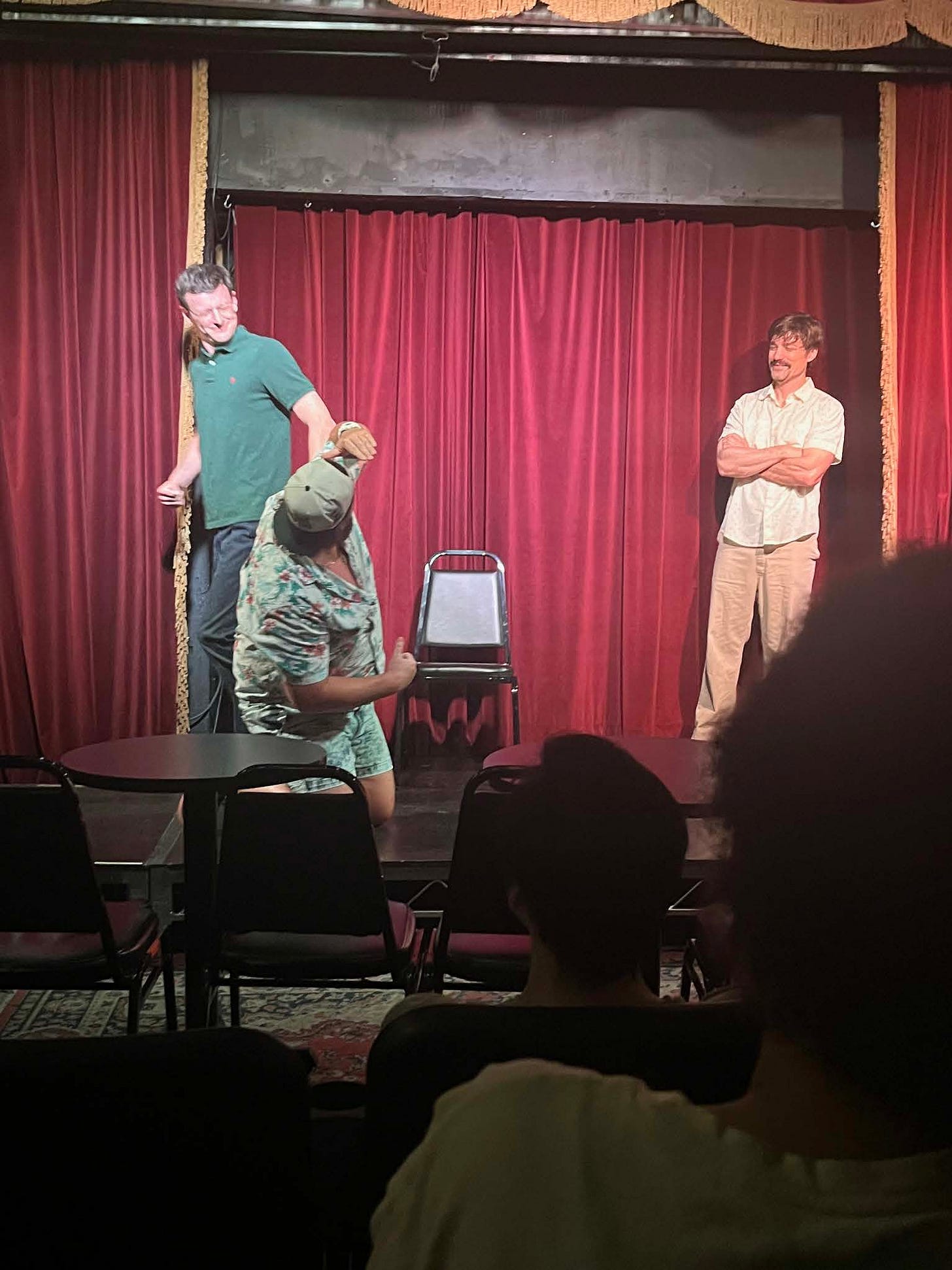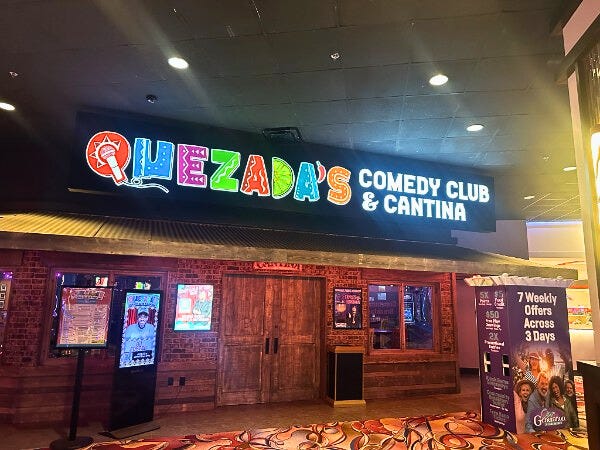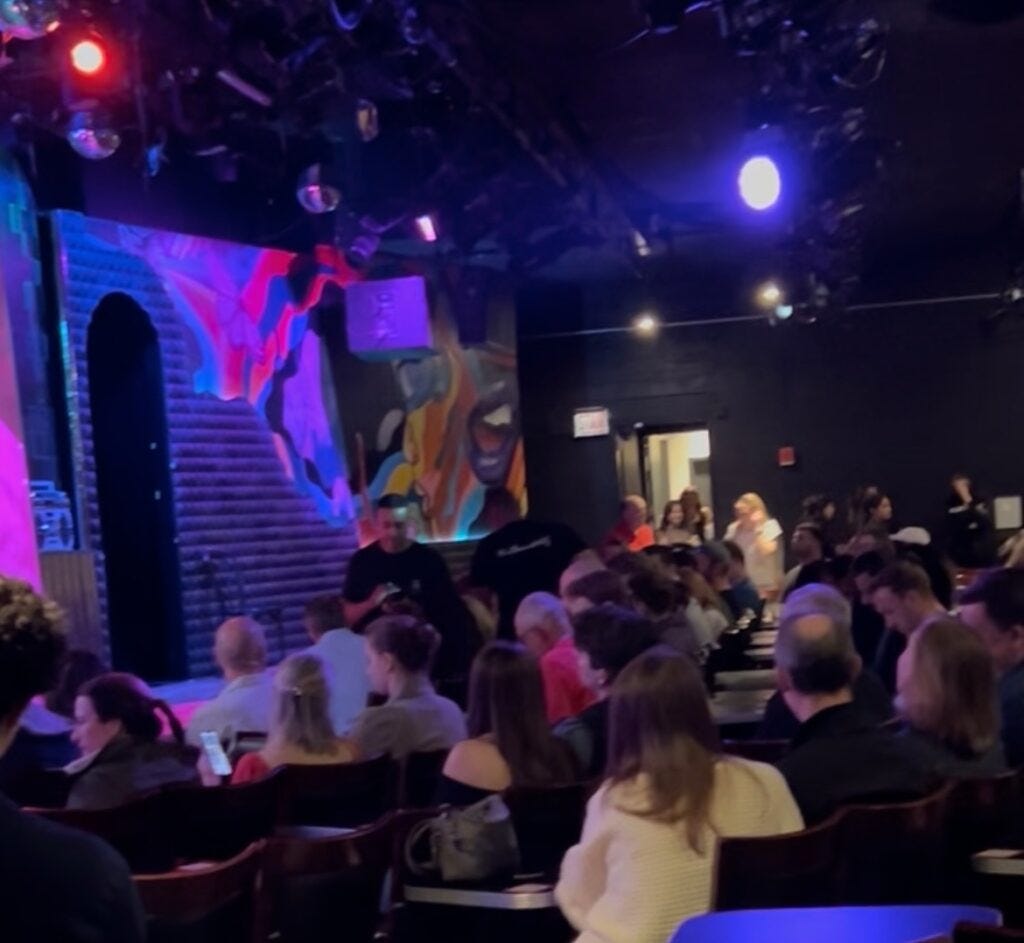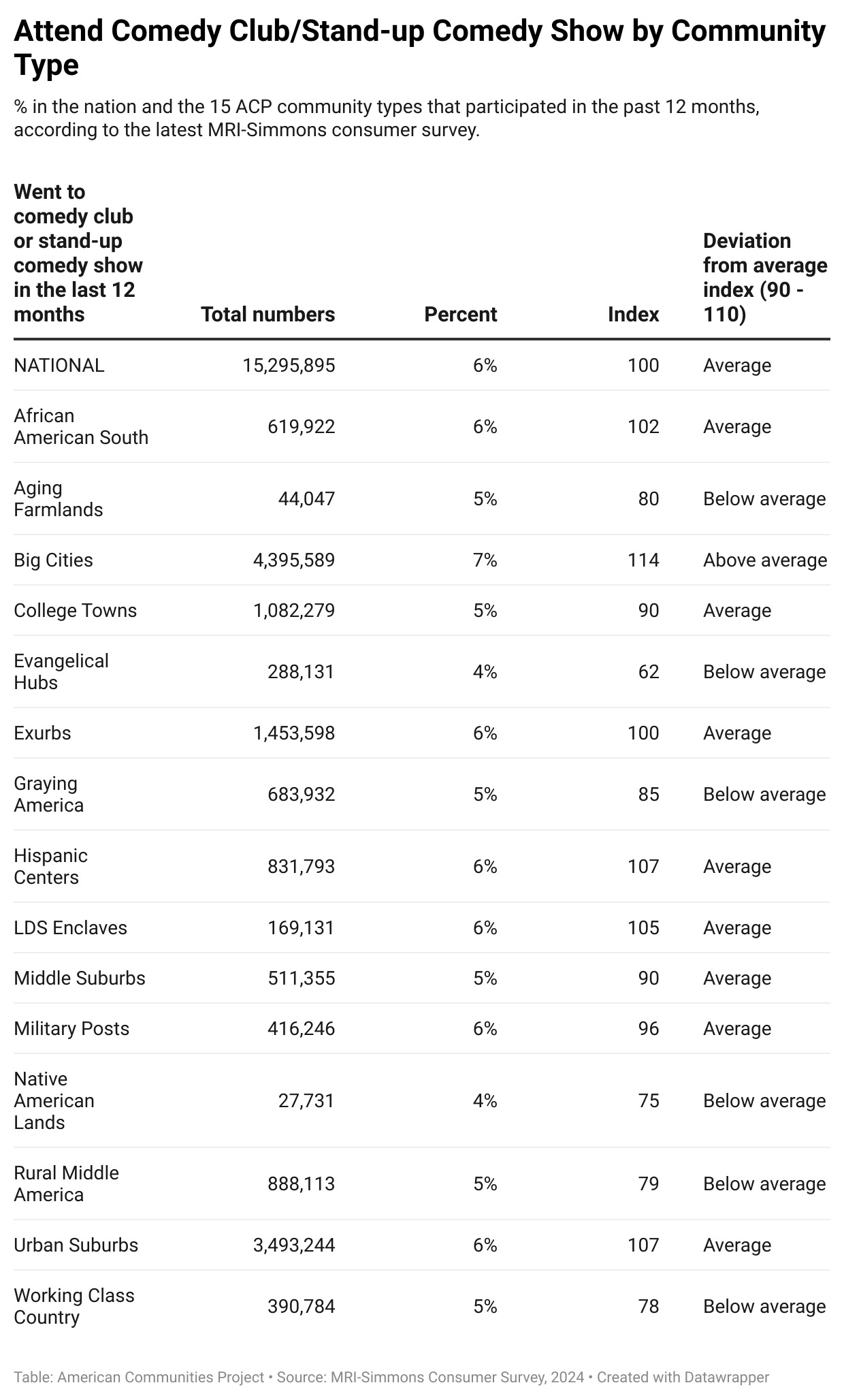Comedy Scenes in a Fragmented America
Writers for the ACP chronicle comedy from coast to coast.
By Ari Pinkus, Jenna Modica, Sarah Murphy, Jenna Fisher, Jake Pinkus, and Kathleen Majorsky
A sense of fragmented reality has churned up intense emotions in public and private spaces across America. In this heated climate, where it seems hard to find humor, who’s going out to see comedy in their community? How are comedians performing in different places?
At the American Communities Project, we sought to understand what live comedy feels and sounds like in America, how comedians are tackling hot-button cultural issues on stage, and how various audiences are responding to their acts.
In our quest, writers around the country chronicled their experiences at comedy shows within or near their home counties, from the west to east coasts.
Los Angeles County, California (Big City)
Sandoval County, New Mexico (Exurb)
St. Louis County, Missouri (Urban Suburb)
Cook County, Illinois (Big City)
Sarasota County, Florida (Graying America)
Bucks County, Pennsylvania (Exurb)A show ticket for one, including service fees, ranged in price at the chosen venues — about $12 in Los Angeles, CA; $17 in St. Louis, MO; $26 in Sarasota, FL; $32 in Sandoval, NM; $39 in Bucks, PA; and $52 in Cook County’s Chicago, IL.
Between the cost, content, and availability, attending comedy shows is a definite niche activity. The 2024 MRI-Simmons consumer survey found that 6% of Americans went to a comedy club/stand-up comedy show in the past 12 months. (The survey was conducted between September 2021 and August 2023.) Just 3% attended less than once a month. Attending shows was most popular in urban-oriented and affluent communities where entertainment options abound, particularly in the Big Cities and Exurbs.
Reaching Audiences and Communities Online and In Person
At the same time, there are ways comedy has become more inclusive. Michelle Robinson, associate professor of American Studies at the University of North Carolina-Chapel Hill, who’s taught the course “The Ethics of Stand-up Comedy,” explained by email: “Since the expansion of platforms that offer opportunities for more comedians to make their work available and even deliver hour-long specials has grown, stand-up comedy writ large includes or addresses more people…. Comedians may be more likely to find their audience(s), either by chance or via ‘the algorithm.’ Popular comedians ‘foster’ or ‘mentor’ one another through the production and direction of specials.
“If the [inclusive] question is really about whether popular humor (or trending stand-up comedy) by and large is conscious of diverse sensibilities and identities, it’s hard to say,” Robinson said.
Comedian and producer Jeremy Essig, who’s experienced the ebbs and flows of the comedy business for the past 25 years, knows these trends well. For five years running, Essig’s company Rhizome Art Limited/Rhizome Comedy in Raleigh, North Carolina, has been producing comedy and distributing specials to Amazon, Apple, Netflix, and other outlets. For 20 years previously, he was a touring comic.
“Comedy is in a boom phase right now,” Essig said in a phone interview. “Clubs are a lot fuller. I feel like it’s a very cyclical thing….”
Essig attributes much of this surge to the pandemic and social media, as people were stuck at home and entertaining themselves on YouTube, TikTok, and Instagram. After the lockdowns ended and in-person entertainment got going again, many wanted to come out and meet the comics they were following online.
The fragmentation of American culture means that “people are playing largely to their own audiences,” Essig said. “You can be a Joe Rogan and be very popular, and or a Joe Rogan derivative, but you can also be someone very left and attract a similar audience. And then, what’s interesting in the middle is people that aren’t as well known.” Some of Essig’s performing comedian peers in the middle ground can see a disgusted face and “people on a hair trigger about smaller things,” he said.
So, is it hard to find comedy that kills everywhere now, compared to, say, 20 years ago, or does it depend on the kind of community where a comedian is working?
Robinson weighed in: “I would compare the situation to network TV before the rise of cable, where comedic ‘gatekeeping’ structured how we understood what good comedy was and trained us (and our bodies) to laugh. This is not to say folks lacked discernment then or now, but cacophony is not bad. ‘Community’ divides can be geographical, generational, virtual (by platform), political, and along so many other lines, and comedians now interface with all sorts of ‘communities.’ Geography probably matters as much as we think…but sometimes the comedy itself changes, because the air is freer.”
What did the writers for the ACP find in their communities? Visit our full story, “Comedy Scenes in a Fragmented America,” with all six vignettes.










